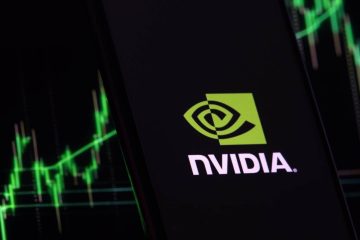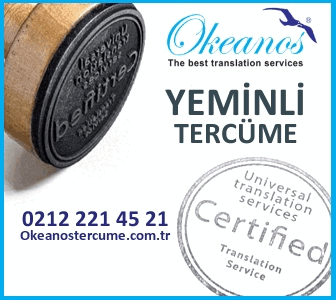What is SEO

Why SEO?
Actively engaging in SEO isn’t just about investing significant time in research, market analysis, and optimization; it also requires continuous and precise awareness of the latest trends and Google updates. Given that Google releases updates of varying scopes several times a year, this presents a significant challenge. However, investing this time can unlock tremendous opportunities.
For most businesses, search engines are the most important channel for attracting users to their website. Moreover, users who arrive at a website via search engines typically intend to achieve a specific goal on that site. This goal is entirely dependent on the user intent behind the search query and could range from merely seeking information to purchasing a product.
SEO also plays a crucial role in new customer acquisition, as search engines frequently serve as the primary source for attracting new users to a website through generic search terms.
Continuous search engine optimization can secure the long-term success of a website without continuously investing in paid ads. Effective SEO optimization can yield returns for years, as it helps build authority in your field, boosts brand awareness, and over time, leads to your website being regarded by Google and users as a reliable source of information.
2. SEO and SEA Compared
SEA stands for Search Engine Advertising, meaning advertising within search engines. The fundamental difference from SEO is that achieving an optimal ranking in Google search results requires paying a fee to the search engine operators, whereas in SEO, a strong ranking is a direct result of the website’s quality. Search Engine Marketing, or SEM, is typically used as an umbrella term, encompassing both SEO and SEA.
3. Key SEO Metrics
The success of an SEO strategy can be measured by a variety of metrics, which are of varying importance depending on the campaign’s goal. Important metrics include:
- Click-Through-Rate (CTR): This metric indicates the percentage of users who clicked on your page in the SERPs after it was displayed to them.
- Bounce Rate: Measures the percentage of users who leave your website after viewing only one page.
- Average Session Duration: Generally, the more satisfied a user is with a page, the longer they will spend on it. The type of content can play a significant role. A very short dwell time (e.g., under 30 seconds) might suggest issues with the page’s quality.
- Number of Backlinks: The quantity and quality of external websites linking to a particular page are used as an indicator of that page’s perceived relevance and quality.
4. How Does SEO Work?
Search Engine Optimization focuses exclusively on organic search results. This means it excludes paid advertisements on the respective search engine. Accordingly, you don’t pay a fee to improve a website’s ranking; instead, you make it appealing to both users and search engines to naturally earn a good ranking. In classic Search Engine Optimization, a distinction is made between On-Page SEO and Off-Page SEO.
4.1. On-Page SEO
On-Page SEO refers to the Search Engine Optimization tasks that involve technical, content-related, and structural adjustments made directly to a website.
The aim of On-Page Optimization is to ensure a webpage adheres to search engine standards while also providing useful and high-quality content for potential users.
The Right Keyword
Before creating any content, it’s essential to gain an overview of potential search queries. To find out the search volume of a search query, there are several tools that can help. Crucially, it involves identifying the so-called User Intent, which is the user’s underlying motivation for their search query. This is decisive for the ranking potential of the planned content.
SEO Meta Tags
Three aspects of a webpage are summarized by the term “Meta Tags“:
- Title Tag: Selecting the right Title Tag (the link text displayed on the Google search results page) is important for both Google and the user. The primary keyword should appear as early as possible, and the chosen Title Tag should accurately describe the page’s topic.
- Meta Description: The Meta Description (the brief summary of the website’s content displayed below the Title Tag) is not a direct ranking factor for Google’s algorithm, but it is highly important for users. It can include further information and a call to action, positively influencing the number of visitors.
- Heading (H1): Headings give a webpage structure, which is of great importance for users and Google. The main heading of a page is also called H1. It should contain the most important keyword and provide the user with a clear idea of the content they can expect on the page. Subsequent headings should be structured according to the importance of the information.
Clear Website Structure
A clear website structure is essential for the user experience. This also includes a proper link structure. It is furthermore important that content is easy to find and that the website doesn’t become overly complex or confusing due to countless nested levels. As a rule of thumb, all content should be reachable from the homepage within a maximum of three to four clicks.
Featured Snippets Optimization
Featured Snippets are excerpts (or ‘snippets’) compiled by the search engine from an existing page, typically displayed at the very top of the Google search results page – above all regular search results. The type or format of the snippet depends on the respective search query; frequently, these are short descriptions or lists. Since Featured Snippets often still hold the ‘pole position’ in search results, optimizing your page content for them is highly beneficial. This involves several key factors.
Examples of these factors include:
- Correct HTML formatting
- Snippet-ready brief summaries
- Excellent text structure
4.2. Technical SEO
Technical SEO focuses on ensuring a webpage is technically optimized for Google’s algorithm. While these measures are primarily relevant for Google, users can also benefit significantly.
Page Speed
The speed at which a website loads after being accessed is of great importance, as Google imposes penalties for slow pages. The primary reasons for a slow page often include overly large images and complex animations. Optimization strategies to reduce loading times include, for example, displaying loading indicators or deferring the loading of non-visible images (lazy loading). Numerous tools are available to analyze a page’s Page Speed.
Crawlability
Crawlability refers to how easily search engines can access and process the content of a website. Good crawlability means it’s easy for a search engine to visit, understand, and index all content on a website.
To provide some context: Search engines ‘crawl’ the internet to discover new content. Once this content is found and indexed, it can typically be found on the search engine (e.g., Google). ‘Crawling’ works via links on a webpage. Google follows one link after another to find content. Therefore, a robust internal linking structure is highly advantageous, promoting good crawlability and ensuring that newly added pages can be discovered by Google and, subsequently, by users.
Mobile Friendliness
The use of search engines on smartphones is already widespread and will only intensify further in the future. For this reason, search engines prioritize ensuring that top results are well-organized and user-friendly on smartphones. Various tools, including the Google Search Console, can help you determine if your website is “mobile friendly” and how it appears on smartphones.
4.3. Off-Page SEO
The core of Off-Page Optimization is Backlinks. Backlinks are links from other websites that point to the page being optimized. From a user’s perspective, backlinks expand a page’s reach and lend it authority within the search algorithm, resulting in a better ranking.
It’s crucial to remember that quality outweighs quantity. A few backlinks from domains with high Domain Authority (i.e., authority in the eyes of the algorithms) are far more impactful than dozens of links from low-quality websites. In the worst-case scenario, an unnaturally high number of backlinks can trigger a penalty from Google, as the search engine may suspect link spamming.
5. Results with SEO
SEO should be viewed long-term, as it can take some time for results to become noticeable. The exact timeframe before measures take effect varies significantly and depends on numerous factors. As a general rule, however, results for already established pages should begin to materialize within three to six months. It’s crucial to understand the continuous nature of SEO. You can’t ‘finish’ optimizing a website once and for all; instead, continuous improvement and expansion are necessary to maintain relevance.
6. Summary
SEO is a comprehensive and complex area of online marketing, distinguished by its immense potential for profitability. The optimization measures mentioned here should be regarded as an introduction. To become a proficient Search Engine Optimizer, one needs to acquire more in-depth knowledge and experience.












